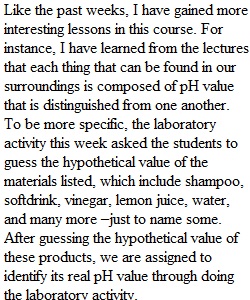


Q SCIE 100 STUDY GUIDE LECTURE No.3A 1. Know the properties of acids and bases. 2. Know the names of common acids and bases which are part of our daily lives and their application. 3. Understand what an acid and a base is in scientific terms. 4. What is a neutralization reaction. 5. What is a strong acid and a strong base and their examples. 6. What is a weak acid and a weak base and their examples. 7. What is a pH scale. 8. What is a neutral, acidic and basic pH. 9. Know the approximate pH of some common substances. STUDY GUIDE LECTURE No.3B 1. What are the contributions of Anton van Leeuwenhoek and Robert Hooke. 2. What are the two major cell types and their differences. 3. Know the differences between prokaryotic and eukaryotic cell. 4. What is cell or plasma membrane. 5. What is nuclear membrane, endoplasmic reticulum, golgi and lysosomes. (functions) 6. What are the functions of mitochondria and chloroplast. 7. Know about the ribosomes, cytoskeleton, centrioles, cilia and flagella. 8. Know the components of nucleus- nuclear membrane, nucleolus, nucleoplasm, chromatin and chromosomes. 9. Know the differences between an animal and a plant cell. 10. Why do cells divide. 11. What are the main events of cell division. (duplication of genetic material, mitosis and cytokinesis) 12. What is interphase and what are it’s phases. What is the most important event taking place in the interphase. 13. Know about the 4 stages of mitosis and the important events taking place at each stage.
View Related Questions